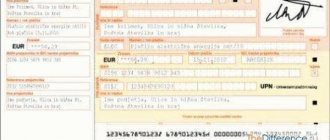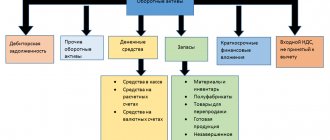- Consignment note, purpose
- Packing list
- Consignment note by proxy
- Consignment note – documentation for inventory accounting
- Conclusion
For a long time, tax payers have been arguing with fiscal authorities regarding the rights to deduct value added tax, if the purchase of products was carried out with a TORG-12 consignment note, the consumer did not receive a TTN. There are also disputes over reducing the profit tax base.
What is TNN
This is accompanying documentation designed to monitor compliance with the rules for transporting goods and materials. Accordingly, the form is used in cases where these services exist in principle. That is, we are considering a situation where company A orders delivery from manufacturer B. If the delivery of products is carried out by company B, as an additional option, which is already included in value terms in the general price list, then we do not need the document. After all, no separate services were provided. Also, if company A itself picks up the product, loads it onto trucks and sends it to a warehouse or point of sale for receipt, there is no need for paper. After all, again no services were provided.
In what cases will we need it, and this aspect largely determines how TTN differs from TN. Namely, it is the presence of a third party providing transportation services. When this new variable appears in the equation, the document becomes necessary. But not necessary, because the order of the Ministry of Finance of 2013 actually abolished the mandatory nature of the order. Now it is quite possible to replace the document with a new analogue, which we will discuss separately below.
It should also be taken into account that the form must be filled out as the main document when transporting cargo by road. If valuables are sent via trains, ships, or planes, then there is no reason to fill it out. Therefore, in the case of the standard version, it is necessary to register this option using trucks.
Documents that regulate the format and rules for drawing up a bill of lading
The form of the transport bill of lading was approved by Decree of the Government of the Russian Federation dated December 21, 2020 No. 2200. It was amended by Decree of the Government of the Russian Federation dated November 30, 2021 No. 2116.
Decree of the Government of the Russian Federation dated November 30, 2021 No. 2116 came into force on January 1, 2022, but the new rules for filling out a transport invoice and the ability to use its electronic form are valid from March 1, 2022.
The rules for issuing a consignment note are established by Federal Law No. 259-FZ of November 8, 2007 “Charter of Motor Transport and Urban Ground Electric Transport.” From January 1, 2022, the Charter was amended by Federal Law dated 07/02/21 No. 336-FZ.
From January 1, 2022, electronic waybills have the same status as a document issued on paper.
The formats of electronic documents were approved by order of the Federal Tax Service dated December 09, 2021 No. ED-7-26/ [email protected] Electronic formats were approved for: waybill; work order; accompanying statement.
Previously on the topic:
Electronic waybills from 2022: for whom it is mandatory, how to switch
What it is
There is serious confusion on this issue. Let us immediately clarify that an abbreviation often means two documents that are completely different in type and purpose. And they do not correlate with each other in any way. Let's deal with both cases step by step.
The difference between a transport bill of lading and a consignment note, or consignment note, is that the consignment note is, in fact, a new analogue of accompanying papers for cargo transportation. It has been introduced since 2013. And now it is predominantly the main one. This is a more modern and correct option. The differences lie in the fact that in the new form there is, in principle, no product section. After all, logically, it is not needed; inventory and materials are not registered on paper. This is simply accompanying documentation that confirms the fact of delivery and the performance of transport services. And it cannot be the basis for financial statements - only in terms of transportation costs, if any. However, the law currently allows for both options.
But the difference between a consignment note and a transport bill of lading is on a completely different level. The first case is confirmation that inventory items have been capitalized and accepted, registered, and placed in the buyer’s warehouse or point of sale. That the shipper honestly fulfilled the terms of the transaction and provided the required quantity of products specified in the contract. This paper has nothing to do with transportation. And it is already a primary accounting document. Accordingly, no matter what transportation confirmation option the buyer or supplier uses, this does not relieve the responsibility for reporting at the time of acceptance of goods and materials. The result is a simple algorithm; it is permissible to select any variation (if there is no direct prohibition by law in this case) of the accompanying documentation. But at the same time, financial statements must always be available.
At the same time, there is another interesting nuance that shows what a transport and consignment note is; the differences can be traced in the number of copies. In the first option we will need only three samples. One remains with the shipper, the second is transferred to the buyer. The remainder goes to the transportation company. But in the case of the old T-1, you will need four copies. Also, one each for the buyer and seller, but two remain with the transportation company.
Waybill
The very first difference between TTN and TN - the second is mandatory for registration. It is usually filled out by the organization that ships the products. It can happen differently if it is spelled out in the contract and suits everyone. Documentation is drawn up for a single shipment or several at once, if all of them are simultaneously transported by one vehicle.
Prepare 3 copies:
- the selling party;
- buying;
- transport company.
There is no product section here. It's even stated in the title. Based on it, it is impossible to register or remove sent goods from it.
It's also worth noting that the order has changed recently. Previously, requirements were created to regulate the transportation of heavy loads. Under the new rules, they regulate the operation of large vehicles.
Accordingly, the order of compilation has also changed. Now paragraph 13 reflects the route along which transport moves, including when delivering dangerous products. In the latter case, you will also need to obtain and carry permission for such actions. 15 indicates the amount of the carrier's services.
Ready-made solutions for all areas
Stores
Mobility, accuracy and speed of counting goods on the sales floor and in the warehouse will allow you not to lose days of sales during inventory and when receiving goods.
To learn more
Warehouses
Speed up your warehouse employees' work with mobile automation. Eliminate errors in receiving, shipping, inventory and movement of goods forever.
To learn more
Marking
Mandatory labeling of goods is an opportunity for each organization to 100% exclude the acceptance of counterfeit goods into its warehouse and track the supply chain from the manufacturer.
To learn more
E-commerce
Speed, accuracy of acceptance and shipment of goods in the warehouse is the cornerstone in the E-commerce business. Start using modern, more efficient mobile tools.
To learn more
Institutions
Increase the accuracy of accounting for the organization’s property, the level of control over the safety and movement of each item. Mobile accounting will reduce the likelihood of theft and natural losses.
To learn more
Production
Increase the efficiency of your manufacturing enterprise by introducing mobile automation for inventory accounting.
To learn more
RFID
The first ready-made solution in Russia for tracking goods using RFID tags at each stage of the supply chain.
To learn more
EGAIS
Eliminate errors in comparing and reading excise duty stamps for alcoholic beverages using mobile accounting tools.
To learn more
Certification for partners
Obtaining certified Cleverence partner status will allow your company to reach a new level of problem solving at your clients’ enterprises.
To learn more
Inventory
Use modern mobile tools to carry out product inventory. Increase the speed and accuracy of your business process.
To learn more
Mobile automation
Use modern mobile tools to account for goods and fixed assets in your enterprise. Completely abandon accounting “on paper”.
Learn more Show all automation solutions
What information is included?
So, the old-style form is divided into two sections. The first – commodity contains the following items:
- The number of goods and materials delivered by the entity.
- The amount of money spent on the purchase.
- Total weight.
- Nomenclature.
The second section contains:
- Information on loading and unloading activities.
- Stops along the route, partial shipments, if any.
- Information on packaging and storage conditions, as well as transportation.
- Details and data for calculation. This includes the amount of money spent on the trip, fuel, expenses, wages of all employees participating in the procedure, drivers, loaders, forwarders.
As you can understand, the first section certainly cannot be called strictly necessary. After all, all the indicated information will still be copied in the financial statements. And rewriting information several times is not a very logical process. In this case, the section can in principle be considered useless. After all, capitalization cannot be carried out based on the completed lines.
Therefore, it was decided to get rid of the section in a new format. And now it is clearly visible how the waybill differs from the goods transport bill. Plus, two new points have been added to the updated variation, which are really important. The first is the full amount of ATP without gradations. To make it convenient to make calculations. And the second concerns the route. The entire trajectory of freight transport is registered. This is fundamentally significant when it comes to inventory items that require a delicate approach. Fragile materials and dangerous goods. It is very important to determine a route so that the road situation does not provoke additional shaking, which will ultimately damage the cargo.






